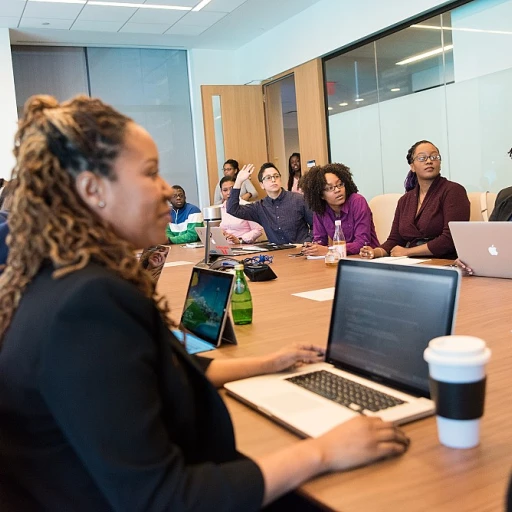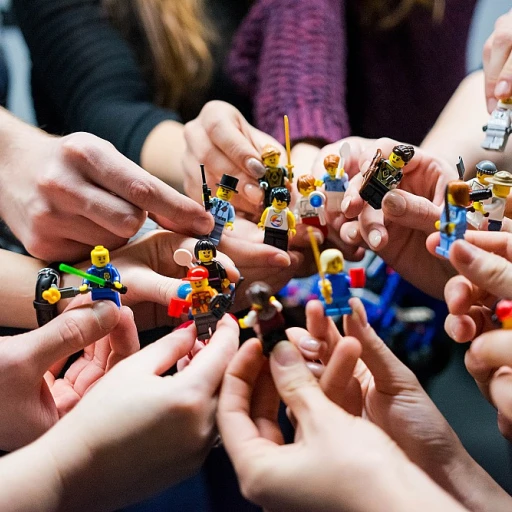
Understanding the ADKAR Model
Embracing the Fundamentals of the ADKAR Methodology
The ADKAR model is a cornerstone of change management, offering a framework that helps organizations implement effective change. Developed by Prosci, this structured approach guides individuals and teams through the change process by focusing on five key elements: Awareness, Desire, Knowledge, Ability, and Reinforcement. Understanding each component of this model is crucial for Chief Human Resources Officers (CHROs) aiming to lead successful organizational change efforts.
Starting with Awareness, it's vital to communicate the reasons behind the change. Employees need to know why the change is occurring and how it impacts them and the organization. The next step, Desire, focuses on fostering the willingness of team members to support and participate in the change. These foundational steps create the groundwork for a supportive environment.
Delving further, the ADKAR model highlights the importance of Knowledge and Ability. This involves providing employees with the necessary information and skills to change effectively. CHROs must ensure that training and development programs are in place to support these stages, empowering team members to transition efficiently.
Lastly, Reinforcement strategies are essential for embedding change in an organization's culture. These strategies help prevent regression to previous patterns by strengthening new behaviors and processes. By understanding and applying the ADKAR elements, organizations can achieve long-term success while embracing transformation.
The Role of a CHRO in Change Management
The Strategic Influence of Human Resources Leadership
In any organization, the chief human resources officer (CHRO) plays a pivotal role in steering successful change management initiatives. Adopting the ADKAR model in corporate environments can significantly enhance a CHRO's ability to foster long-lasting transformations. Organizations need to adapt to evolving circumstances, making the role of a CHRO critical in facilitating these transitions. At the heart of effective change management, CHROs use their extensive knowledge and abilities to bridge gaps between current states and desired outcomes. They work closely with team members to identify resistance, manage employee concerns, and ensure that the change model aligns with organizational objectives. A CHRO’s primary focus includes:- Ensuring that employees across all levels maintain awareness of both the necessity and impact of proposed changes.
- Supporting the development of a collective desire within the organization for change, encouraging willingness and positive engagement among employees.
- Cultivating opportunities for training, which bolster the knowledge and ability needed for team members to transition smoothly into their new roles or processes.
- Establishing a foundation for continuous support and reinforcement to nurture a culture of change and responsiveness.
Building Awareness and Desire
Establishing a Foundation for Change
Creating a successful change management strategy starts with building awareness and desire among employees and team members in the organization. The ADKAR model emphasizes the importance of cultivating a foundational understanding of the need for change, which is critical to ensuring that all stakeholders are on board with the transformation process. Firstly, awareness can be achieved through transparent communication. Sharing detailed insights about the current state and the reasons driving the transformation helps employees understand the necessity for change. This openness fosters trust and minimizes resistance, allowing for smoother transitions. Desire follows awareness as employees need to be motivated and willing to move from the present circumstances to a future state. This can be facilitated by highlighting the benefits of the change, not only for the organization but for the individuals involved. Crafting strategic interview questions for candidates can give HR leaders the insights necessary to gauge the readiness of their teams and tailor the support provided effectively. Supporting employees through personalized training and development initiatives is critical in building knowledge and ability, two other core components of the ADKAR model. Tailoring these programs to address the specific needs of team members ensures they are equipped to embrace new processes and technologies, enhancing their capabilities to perform effectively in the new landscape. While the journey to successful change is complex, it is the strategic combination of awareness and desire that propels organizations forward. By maintaining an open line of communication and providing the necessary support, HR leaders play a pivotal role in guiding their teams through the challenges and opportunities of organizational change.Developing Knowledge and Ability
Equipping Team Members with Essential Skills
In the process of organizational change, the development of knowledge and ability among team members stands as a cornerstone. It's not only about transferring information; it's about empowering individuals with the skills they need to thrive in a new environment. This involves both formal training and informal learning opportunities to foster a continuous improvement culture. A well-structured training program tailored to the needs of your employees is essential. By utilizing the ADKAR model, HR leaders can identify gaps in current knowledge and ability, allowing them to deploy targeted interventions. This approach not only improves individual and team performance but also enhances overall organizational readiness for effective change. Organizations must also consider innovative ways to facilitate learning. Interactive workshops, online courses, and mentorship programs can significantly enhance the learning process. These opportunities encourage team members to share knowledge and experiences, fostering a supportive environment. Providing regular feedback and setting realistic milestones can aid employees in tracking their progress and staying motivated throughout the change process. As a CHRO, your role includes fostering this supportive atmosphere where continuous learning is not merely encouraged but actively supported. Ultimately, building knowledge and ability is about preparing your organization for the challenges of tomorrow. By investing in the development of your team members today, you help ensure sustained progress and adaptability in a rapidly changing business landscape.Reinforcement Strategies for Sustained Change
Strategies for Long-Term Change Success
The ADKAR change management model stresses the importance of reinforcement to ensure that change becomes a permanent fixture within the organization. As a Chief Human Resources Officer (CHRO), implementing reinforcement strategies is a cornerstone for securing long-term success in any organizational change. Without consistent reinforcement, changes may lose momentum, causing the organization to revert to its previous state. One of the key components in reinforcing change is maintaining continuous support for your team members. In the initial stages of change, organizations often focus heavily on building awareness and desire. However, maintaining these elements through follow-up activities is crucial to prevent a decline in engagement and enthusiasm.- Consistent Communication: Regular updates can emphasize the progress made and any upcoming changes. It's important that employees feel informed and included throughout the transition.
- Ongoing Training and Development: Providing continuous training helps employees adapt their knowledge and ability to the new processes. This investment demonstrates the organization's commitment to employee growth and support.
- Celebrating Successes: Recognizing achievements, both minor and significant, can boost morale and reinforce the importance of the change. Whether it's through public acknowledgment or incentives, these celebrations inject new energy and motivation into the team.












